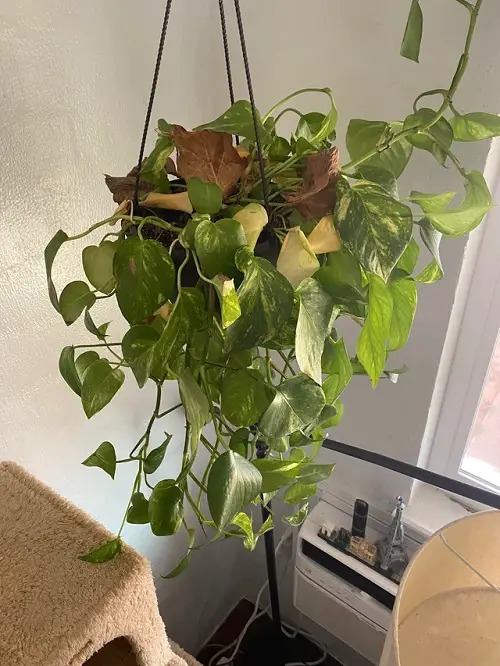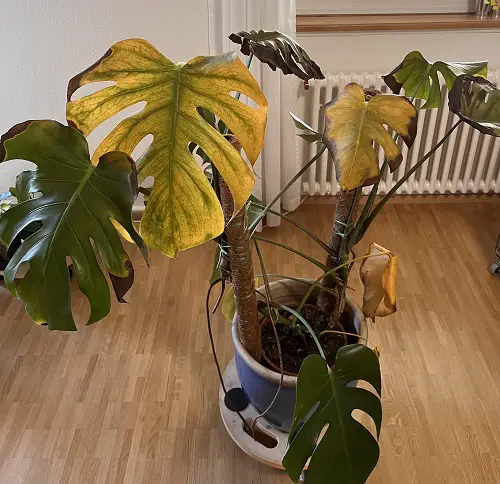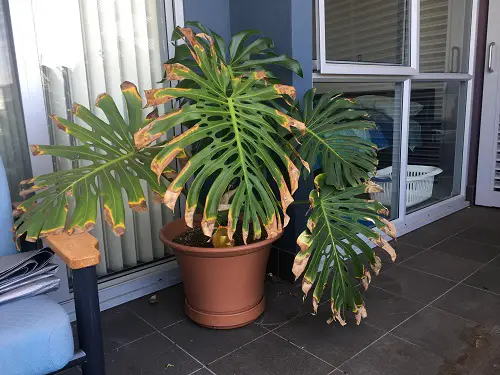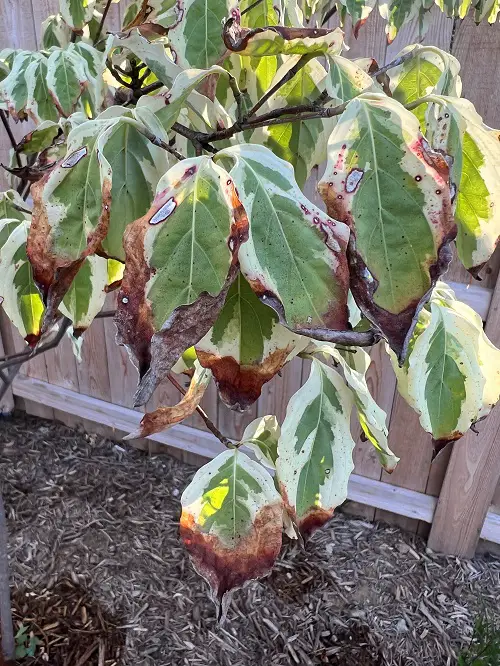If your Indoor Plant Leaves are Turning Brown and Crispy, it’s time to find the possible reasons and easy solutions.
It is woeful when your thriving plants suddenly become weak and sickly, pushing you to give up. Perhaps it’s their way of telling you to pay attention! We explore why your indoor plant leaves may turn crispy and brown and suggest possible solutions to save them!
Indoor Plant Leaves Turning Brown and Crispy
1. Lack of Watering

Let’s write off the obvious causes first. Plants need water to hydrate and nourish their cell structure. Water and fluids push their cell membranes against cell walls (turgor pressure), keeping plant tissue upright and rigid. When leaves lose water, they lose this pressure, leading them to wilt, dry up, and eventually turn crispy and brown.
However, if you observe, you can see the same wilting appearance due to overwatering. But there is a difference—an overwatered plant has soft, mushy leaves, and when it is underwatering, the leaves are papery and crisp.
The Fix: Water deeply and always check how moist your soil is by dipping your finger an inch into the surface and water when it feels a wee bit dry.
2. Sunburn

Leaves burn just like humans under direct scorching sun. Especially with plants that are used to dappled sunlight or that grow under shaded canopies of rainforest, when moved to direct, intense sunlight, their leaves will turn crispy and dry.
The Fix: Understand your plant. Check out the kind and amount of sunlight exposure your houseplant is used to and the place where it’s most comfortable. If leaves have already started browning, move it to a spot with filtered sun—like an east or north-facing window—or use sheer curtains to diffuse harsh rays.
Pro Tip: Rotate your plants so all sides of the foliage get equal exposure to light. This reduces the chance of one side getting all the sun and burning.
3. Lack of Humidity

Did you know plants sweat like we do? They discharge extra moisture from their leaves via transpiration, which helps them cool down and take in nutrients. But if the air gets too dry, the leaves don’t get a chance to replenish this lost moisture, turning their edges brown and burnt or driving them to curl up.
The Fix: Mist your plants. However, it doesn’t work as well as other measures, like grouping them to keep humidity levels up. If they are exposed to sudden draughts of hot or cold, dry air, move them to a cozier spot. You can also get a humidifier for your plants. Here are more ways that will work.
If your home stays dry most of the year and you don’t want the extra work, you can go with plants that thrive in low humidity, such as succulents, cacti, or other drought-tolerant plants.
4. Salty Soil
Excessive use of fertilizers and softened water leads to a build-up of sodium in the soil, making the medium too saline. Without proper drainage and watering, salts start to collect in the potting mix, drying out your leaves and causing a faint white crusty layer. Hard water, typically from the ground or tap, can often contain excessive calcium, sulfates, and magnesium, which can also lead to this white, chalky residue.
The Fix: Your plant does need supplements to grow. So focus on giving it a weak dose of balanced fertilizer and repot it with fresh soil every few years. Extra soft water can also turn the leaf tips brown, so use distilled, filtered, or rainwater to keep your plants healthy.
Pro Tip: If you need a quick fix, try leaching. Water the soil multiple times to flush out excess salts.
5. Pests and Diseases
Many pests, including scale, mealybugs, spider mites, and aphids, can infest your houseplants, while fungi can attack their roots. All this can cause your leaf centers to turn brown or yellow, a clear sign of disease.
The Fix: To treat minor pest and fungal problems, use insecticidal soap or neem oil. Prune back any infested plant parts and clip off unsightly brown leaves. Allow the plant to rest, recover, and check for pests regularly.
6. Chemical Damage
Pesticides, cleaning agents, chemical pollution, home remedies like extra strong dish soap, oils, or even fluoride from tap water–any of these could injure your plant, cause chemical burns, damage its delicate leaf tissues, and turn them crispy and brown. Herbicides, in particular, are the most harmful since they are designed to kill plants.
The Fix: To prevent phytotoxicity, use filtered or distilled water and keep plants away from areas where harsh chemicals are used. If you suspect chemical exposure, gently rinse the leaves with water to remove any residues. Ensure proper air circulation around the plant so there’s no build-up of fumes or cleaning chemicals.


